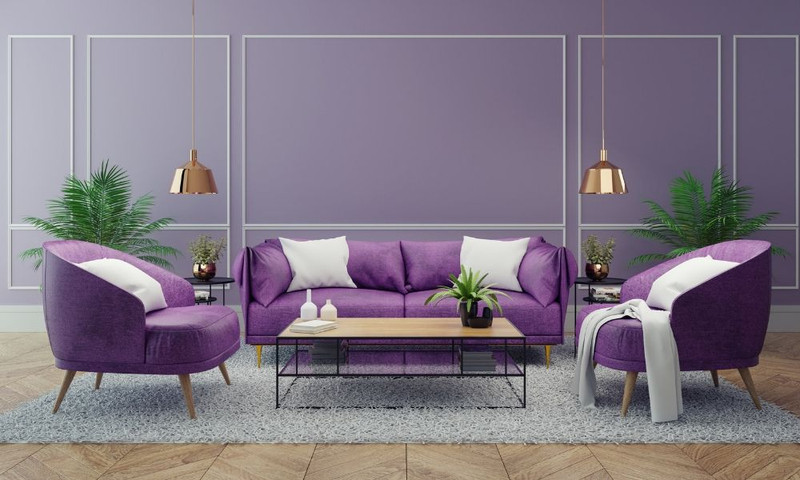Imagine you’re in a hospital, waiting for the doctor. You look at the walls, which are a cold white, and the tiles on the floor alternate between monotone shades of black and grey. You’re nervous and unsettled, potential outcomes rattle throughout your brain.
Now, visualize a similar scenario, only this time you feel a touch more assured. The walls here are a warm sunflower yellow and your feet run across a floor that’s colored in a comforting mauve. You feel you’re in a place that’s meant to help you maintain your health. So, what’s the difference? How can mere colors cause such a massive shift in mood?
For years, extensive scientific studies hypothesized the importance of the effects color has on the human mind. One of these studies accrued results in an experiment in which, over the course of six months, the light reflected by incandescent lightbulbs was adjusted to alter the appearance of color in a room. The color reflections impacted the emotions of those exposed to it and influenced how long a person was willing to stay in that space.
Understanding how color and art affect us is something that we’ve steadily become more aware of over the years. Today, 93% of Americans think that art is an essential component of education, as a proper understanding of it is as important as any math equation or science experiment. Color, as we know, is one defining factor of art and many other fields.
Architects recognized this fact, and experts use color to evoke a reaction from the viewer. A statement from an architect stressed that a rich ocher exterior made an impact of the quality of his homes, and if you look back hundreds of years, you’ll see purple make an appearance in the architecture of kings. A political figure sitting in a room adorned with the rich shade comprised of the primary pigments blue and red believed the color was an affirmation of his importance. It instigates the same reaction today, both from lingering psychological effects born from our histories and from the shades that create it.
Color, in a way, is as much an optical illusion as it is an aesthetically pleasing adornment. Although a coat of paint won’t change the physical size of your room, it can alter how you perceive it. A room painted with a moss green can make the space seem cluttered and claustrophobic, but when painted with a light beige, it may appear larger. Even the change of color can cause a positive psychological effect and aide in easing claustrophobic-induced anxiety.
The impact of color on our emotions is something we learn more about every year. The more information we collect, the more we can use it to our advantage. We spend a lot of time indoors, and what surrounds us plays a huge role in how we feel and develop as people. The same color that covers your walls may also impact the burgeoning emotions of a child still yet discovering the world; however, even those of us past our developing years still have much to uncover about color.
Now, visualize a similar scenario, only this time you feel a touch more assured. The walls here are a warm sunflower yellow and your feet run across a floor that’s colored in a comforting mauve. You feel you’re in a place that’s meant to help you maintain your health. So, what’s the difference? How can mere colors cause such a massive shift in mood?
For years, extensive scientific studies hypothesized the importance of the effects color has on the human mind. One of these studies accrued results in an experiment in which, over the course of six months, the light reflected by incandescent lightbulbs was adjusted to alter the appearance of color in a room. The color reflections impacted the emotions of those exposed to it and influenced how long a person was willing to stay in that space.
Understanding how color and art affect us is something that we’ve steadily become more aware of over the years. Today, 93% of Americans think that art is an essential component of education, as a proper understanding of it is as important as any math equation or science experiment. Color, as we know, is one defining factor of art and many other fields.
Architects recognized this fact, and experts use color to evoke a reaction from the viewer. A statement from an architect stressed that a rich ocher exterior made an impact of the quality of his homes, and if you look back hundreds of years, you’ll see purple make an appearance in the architecture of kings. A political figure sitting in a room adorned with the rich shade comprised of the primary pigments blue and red believed the color was an affirmation of his importance. It instigates the same reaction today, both from lingering psychological effects born from our histories and from the shades that create it.
Color, in a way, is as much an optical illusion as it is an aesthetically pleasing adornment. Although a coat of paint won’t change the physical size of your room, it can alter how you perceive it. A room painted with a moss green can make the space seem cluttered and claustrophobic, but when painted with a light beige, it may appear larger. Even the change of color can cause a positive psychological effect and aide in easing claustrophobic-induced anxiety.
The impact of color on our emotions is something we learn more about every year. The more information we collect, the more we can use it to our advantage. We spend a lot of time indoors, and what surrounds us plays a huge role in how we feel and develop as people. The same color that covers your walls may also impact the burgeoning emotions of a child still yet discovering the world; however, even those of us past our developing years still have much to uncover about color.

